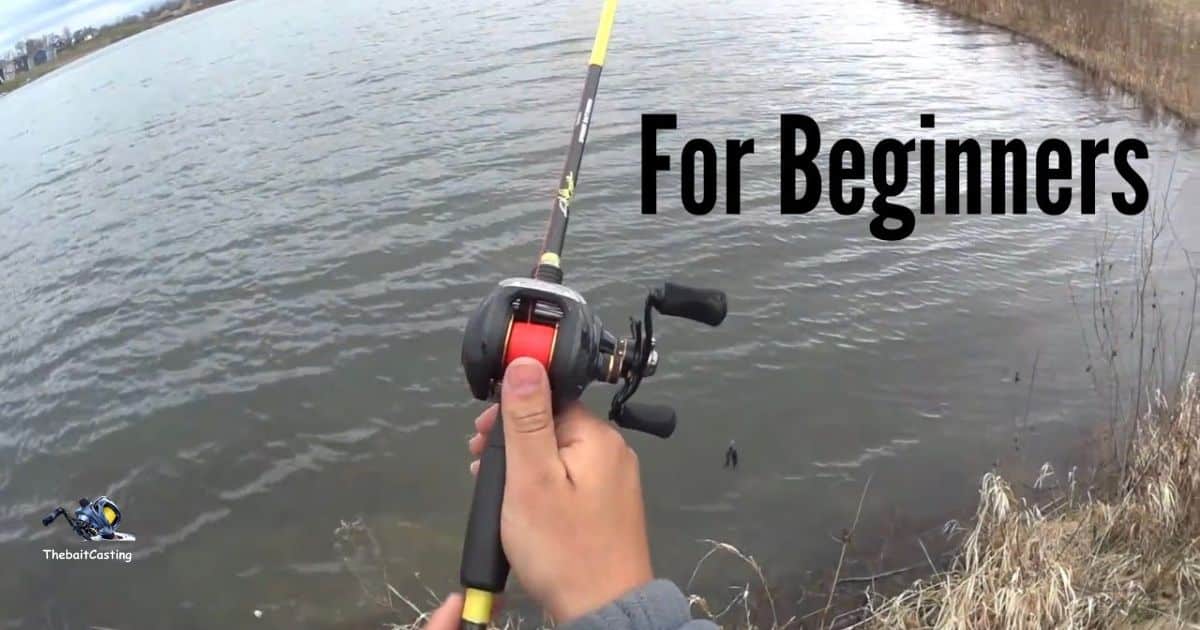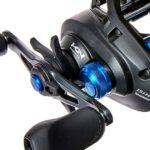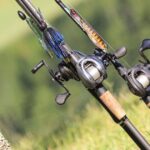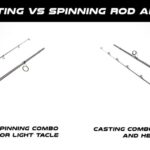A bait casting reel is a special kind of fishing reel. It’s popular among many anglers because of its precision and control. Unlike other reels, a bait caster requires some skill to use. But don’t worry! With the right guidance, anyone can master it.
Picture yourself landing a hefty fish, sensing the excitement of the pursuit. Holding a bait casting reel, you’re not merely fishing; you’re on a journey, honing a skill that links you to the marvels of nature. Are you prepared to take the plunge?
Fishing has been a beloved pastime for generations. Among the tools of the trade, the bait casting reel stands out. It offers anglers unparalleled control, letting them cast with precision and accuracy. But, it’s not as simple as it looks. Let’s find the secrets of using a bait casting reel and a journey that enhance your fishing experience.
Anatomy Of A Bait Casting Reel

A baitcasting reel is a tool used in fishing, and understanding its parts can help anglers use it more effectively. Here’s a breakdown of its key components:
- Handle: This is the part you turn to reel in your line after a catch or after casting.
- Star Drag: Located on the handle’s side, it adjusts the tension on the spool. Tightening it makes it harder for a fish to pull line out.
- Spool: This is where the fishing line is wound. It spins when you turn the handle.
- Thumb Bar/Release Button: Located at the top, pressing this releases the spool to allow line to be cast.
- Level Wind System: This ensures the line winds evenly across the spool. It moves back and forth as you reel in.
- Drag Adjustment Knob: Found near the handle, it adjusts how easily the line pulls out when a fish pulls on it.
- Braking System: Modern reels have either magnetic or centrifugal brakes. These help prevent backlash (tangled line) during casting.
- Line Guide: This is a small part that helps guide the line evenly onto the spool.
- Frame: The main body of the reel where all components are attached. It provides the structure and support.
- Gearbox: Inside the frame, this set of gears helps translate the rotation of the handle into the spool’s movement.
Knowing these parts and their functions can aid in maintaining, adjusting, and effectively using a baitcasting reel for a successful fishing experience.
Gear Ratio And Its Importance
The gear ratio of a fishing reel tells us how fast the reel brings back the fishing line. Think of it like a speed setting for your reel. Some people call this the “line recovery rate.” But, is this speed thing really important? Honestly, if you are only starting out with fishing, you don’t need to stress about it. It’s like diving deep into details that beginners don’t really need to think about. So, for now, focus on the basics and enjoy your fishing.
How To Spool Your Baitcaster?
Spooling a baitcaster means putting line on your reel correctly. Setting up the reel is about getting it ready to cast without tangling. The brakes control the reel’s speed, and the drag helps you handle big fish without breaking your line. Here is following step-by-step guide:
- Thread the Line: Pass the fishing line through all the rod’s guides and the reel’s guide.
- Attach the Line: Wrap the line around the reel’s spool and tie it using an Albright knot. Wet it a bit and pull tight.
- Trim Excess: Cut off any extra line close to the knot.
- Line Direction: Make sure the line winds onto the spool in the same direction it’s coming from the spool you’re using.
- Maintain Tension: Hold the line with slight tension as you spool it onto the reel.
- Fill Up: Stop when the spool is about 1/8th inch from being full.
Setting Up Your Reel:
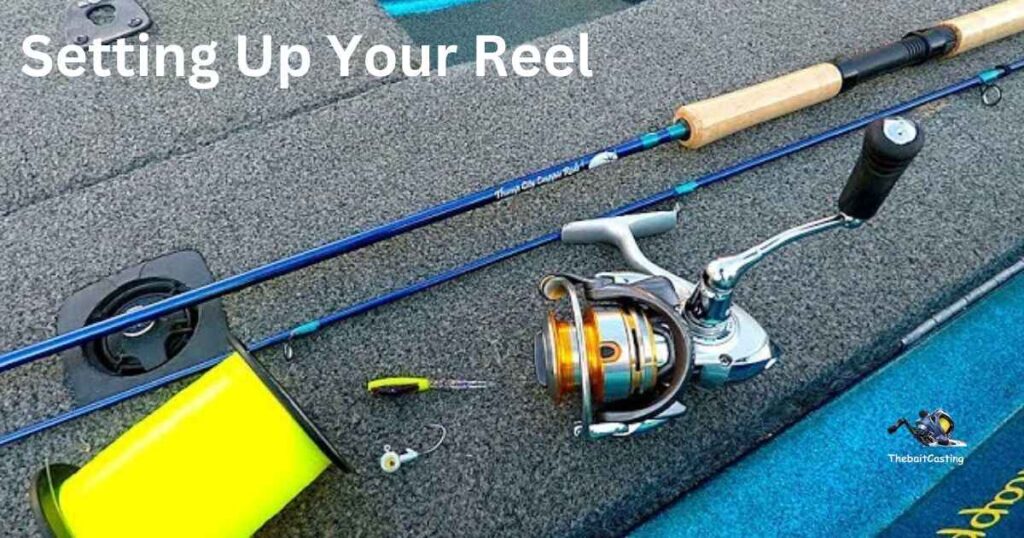
- After spooling, set up the reel before casting to avoid tangles.
- Hold the rod up at a 2 o’clock angle, leaving some line with the lure hanging down.
- Adjust the spool tension so the lure takes about 3 seconds to fall when you release it. Test a few times and adjust if needed.
Adjusting The Brake System:
The brake controls how quickly your spool stops after a cast. Start with the brake on its lowest setting.
- After setting the spool tension, increase the brake setting. Newbies often start between 5-7, but adjust based on your comfort.
- If you reduce the spool tension and lower the brake, you can cast farther, but it might tangle more. Find a balance that works for you.
Setting The Drag System:
- The drag system adjusts how much resistance your line has when a fish pulls.
- Turn the drag wheel forward to tighten or backward to loosen.
- Keep some drag so the line doesn’t snap when a fish pulls. Adjust it tighter for bigger fish and looser for smaller ones.
How To Cast A Baitcaster: A Simple Guide
- Hold Firm: Grip the rod with one hand. Keep your thumb ready on the reel’s button.
- Press And Hold: Push the reel’s button with your thumb. Hold it down.
- Swing Back: Move the rod back, like you’re waving hello over your shoulder.
- Aim Forward: Point the rod where you want to cast.
- Release And Wait: Let go of the button with your thumb. Wait a second.
- Follow Through: After casting, move the rod forward smoothly.
- Practice: Repeat steps and practice to get better.
Simple Tips For Using A Baitcaster
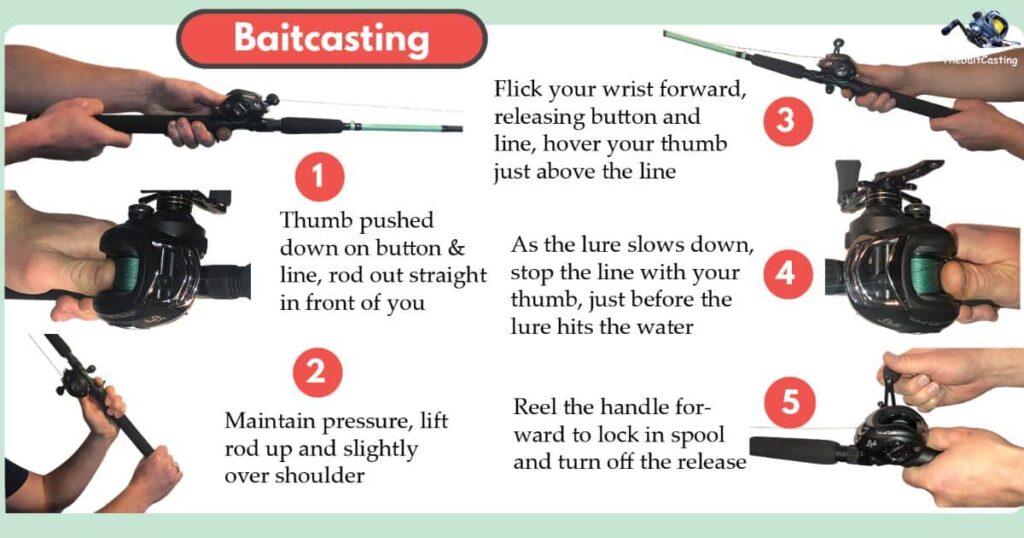
Using a baitcaster can make fishing more fun and effective. It lets you cast further, use heavier baits, and choose stronger lines. But, like any skill, it takes practice. Sometimes, the line can tangle, called a backlash, if you’re not careful. Here are some tips to help:
- Match Gear: Use a rod, line, and bait that fit together. For most fishing, a 12 Lb. line is a good start. It works well for catching bass with different lures.
- Practice Casting: The more you practice, the better you’ll get. Try casting in different ways and at different things. Shorter, controlled casts are great for tight spots.
- Smooth Moves: Casting far isn’t about forcing the rod hard. It’s about a smooth, flowing motion. If you do it right, the rod will help send your bait far. And with time, you’ll cast even further. Adjust your reel settings as you practice.
Remember, like anything, using a baitcaster gets easier with practice. Keep trying, and soon you’ll be casting like a pro.
FAQ’s
Are baitcaster reels hard to use?
Using a baitcaster takes some practice, especially controlling the line with the knobs and brakes. But once you get the hang of it, you’ll have more fishing tricks up your sleeve. However, that doesn’t mean you should give up on your spinning rod.
Can a beginner use a baitcaster?
The Abu Garcia Max X is great for beginners and costs around $60, sometimes even less. Baitcasting reels can vary, but once you get the hang of using one, you can handle any. Keep in mind, though, all baitcasting reels can have tangles, no matter how good they are.
What is better baitcaster or spinning?
I usually use spinning reels for thin fishing lines, like 8-pound test or lighter. For thicker lines, 10-pound test or more, I prefer using a baitcaster.
What are the pros and cons of a baitcaster?
| Pros of Baitcaster | Cons of Baitcaster |
|---|---|
| 1. Better Control: Offers precise control over casting distance and lure placement. | 1. Learning Curve: Can be challenging for beginners and may result in backlash. |
| 2. Stronger Line: Suitable for heavier lines, allowing for more robust and larger fish targets. | 2. Price: Typically more expensive than spinning reels, especially for quality models. |
| 3. Versatility: Can handle a wide range of lure weights and types, from light to heavy. |
Can you use a baitcaster for all fishing?
Yes, but be careful. If your reel is set up for casting 3/8oz jigs and you want to use a 1/2oz weight with bait, you might need to adjust the brakes to prevent tangles.
Final Thoughts
How To Use A Bait Casting Reel? Discovering the art of using a baitcasting reel adds a thrilling dimension to fishing. It’s not just about the catch but the journey itself—the thrill of perfecting your technique and the bond with nature. As you practice and grow more familiar with your reel, you’ll unlock countless memorable moments by the water.
Yet, remember, fishing’s essence is in its tales, shared sunsets, and friendships forged. Whether a novice or a seasoned angler, treasure each cast and embrace the outdoors’ wonders. Cherish every catch and always hold nature in high regard. Happy fishing!
